Autumn is a spectacular time to visit Denali National Park. The alpine and subalpine tundra at higher elevations gleam with fall color by mid- to late-August. The taiga at lower elevations is aglow in reds by early September, a time when the aspen and balsam poplar near the park entrance turn brilliant yellow and gold.
Winter’s bitter cold has not yet set in. The moose rut, or mating season, is a great time to view moose. Bears are feeding actively to fatten up for winter. Caribou are migrating. You may be fortunate to see Dall sheep, or perhaps a wolf. An early snow may decorate the mountains. You might possibly see a spellbinding display of the Northern Lights.
The Athabascan people called the mountain “The Great One,” or “Denali,” and I prefer that name to the name Mt. McKinley given the mountain by an early prospector in letters back to the East Coast.
Most of the six-million-acre park and preserve is wilderness. There is a single road, 92 miles long, into the park. The first 13 miles of the park road are open to the public. Past this point, the road is gravel and vehicle travel is restricted. You must travel by shuttle or tour bus, unless you have a campground reservation - in which case you may drive to your campground but must then leave your vehicle there for the duration of your stay.
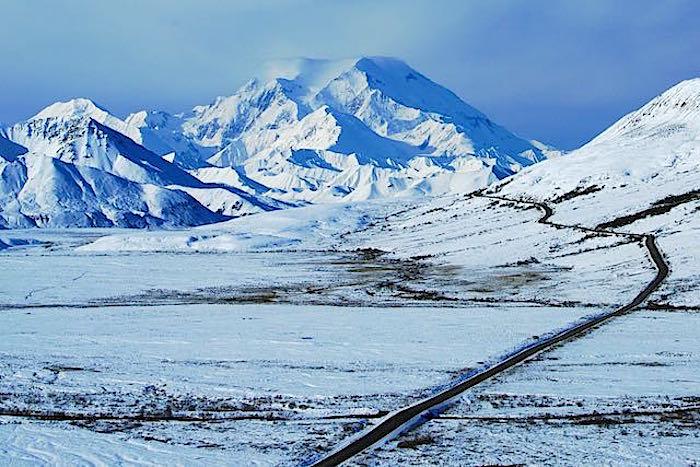
The park road offers spectacular views of Denali on a clear day/Jean Bjerke
The landscape is beautiful, wild, spectacular, and majestic. Denali (Mt. McKinley) is a glorious mountain, breathtaking, impressive - magnificent beyond words. It is the tallest mountain in North America and has the greatest elevation gain from base to summit of any peak in the world, rising from a plateau of about 2,000 feet elevation to a spectacular 20,322 feet, clothed in the pure white of snow and glaciers. It is exceptional and unique in that it is in the middle of a six-million acre wilderness accessible by road.
On a clear day the mountain can be seen from more than a hundred miles away, but the awe-inspiring peak is famous for being shrouded in clouds most of the time. The Alaska Range, of which Denali is one peak, is spectacular in itself. But Denali rises far above the next highest peak and when it is visible, it dominates many views within the park. During our two-week visit early last September, it was visible slightly more than half the time.
The scrub vegetation of the taiga, as the northern boreal forest at this latitude is called, turns infinite shades of red and rust in the fall, making for gorgeous views of the subalpine landscape from about 2,500 to 3,500 feet elevation. The green of the scattered spruce contrasts with the reds of the taiga, the entire landscape framed by rugged mountain ranges. The forest floor feels spongy under your feet as you walk on different mosses and lichens, embellished with many kinds of mushrooms.
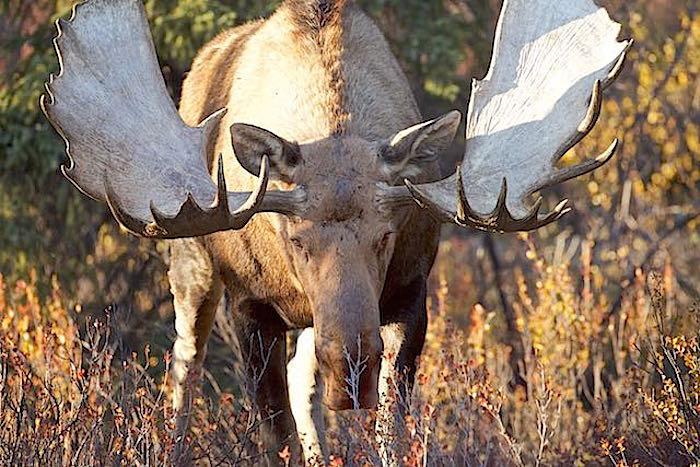
Moose are commonly seen from the park road in morning and evening hours during the moose rut in September/Randy Bjerke
Opportunities for wildlife viewing in Denali are as awesome as its spectacular scenery. You can see a surprising amount of wildlife from the park shuttle bus, including grizzlies, moose, caribou, Dall sheep, and even wolves. Although shooting photographs from a bus window is not the photographer’s ideal (at least the windows open!), the shuttle drivers stop briefly whenever wildlife is sighted, and they try to give passengers an opportunity for photos.
But the best photographic opportunities in fall might be if you camp at Wonder Lake, or when you cruise the first 13 miles of the park road daily in mornings and evenings during the moose rut - or if you are fortunate to be able to drive the entire length of the park road in your own vehicle with a road lottery permit.
When we visited, a snowstorm closed the road past Eielson Visitor Center at mile 66 the first day of our visit, and more snow delayed traffic the next day. The views of the snow-covered landscape were particularly spectacular after these storms.
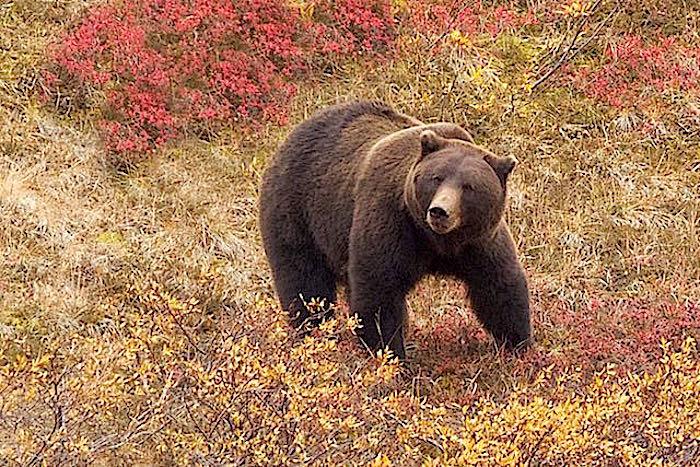
This grizzly was hunting for berries on the tundra/Jean Bjerke
There are five campgrounds along the park road, and another at the park entrance. Lodging is available at hotels just outside the park entrance, and at several private lodges at the very end of the park road in the Kantishna area, accessed by the park shuttle bus or by air.
We enjoyed staying at three of the park campgrounds over a two-week period in order to experience and access different parts of the park more easily. Backpacking and back-country camping require a permit. Several companies offer flight-seeing over Denali. For four days per year a road lottery allows a small number of people to drive the park road in their own vehicle on their one assigned day. Bicycling the park road, or parts of it, is popular and a great way to see the park.
Moose and grizzly were the wildlife we saw most in early September. Moose can be seen anywhere in the park, but during the September rut we saw them primarily in a five-mile section, from about mile 7 to mile 12 along the park road, a section which was clearly signed and closed to any hiking off the road, during the rut. Moose are most easily viewed near the road in the early morning and early evening hours during the rut. Grizzlies, too, can be seen anywhere in the park, but we saw most of them from the park shuttle beyond the Teklanika viewpoint, and when we drove the same parts of the road during the road lottery.
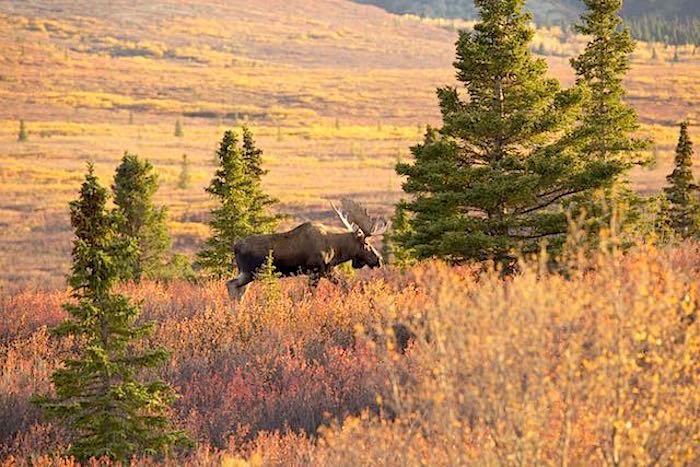
Moose are best viewed in the early morning or late evening hours/Jean Bjerke





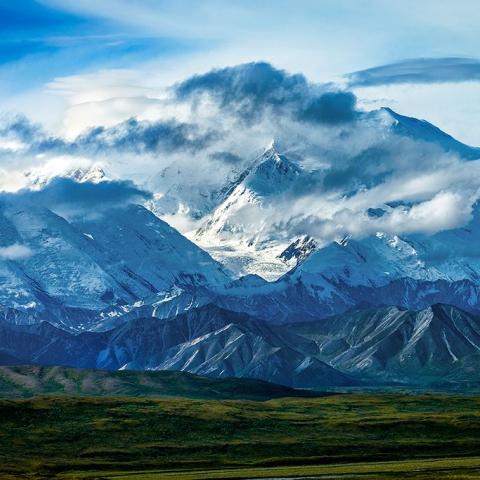
 Support Essential Coverage of Essential Places
Support Essential Coverage of Essential Places






